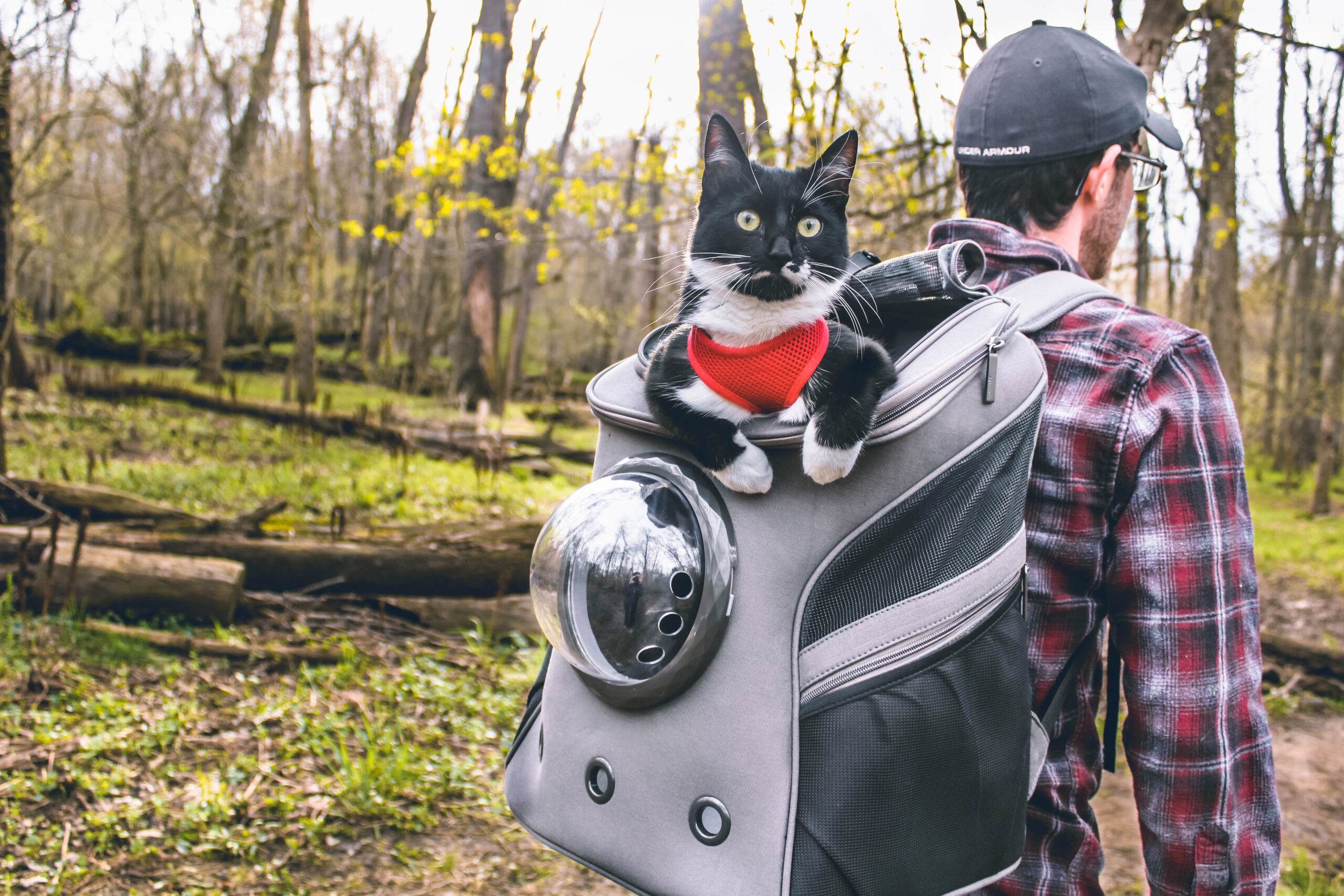
What To Do Before You Hike With Your Cat
Hiking with your cat can be so much fun. It is a great way to bond with your cat and get them exercise and mental stimulation. But before you hike with your cat, you need to prepare. There are some things you need to do before you go, as well as certain things to bring with you. You want to be as prepared as possible to make sure your cat feels safe and enjoys their time.
The Basics:
If you are looking to start walking your cat, we have plenty of resources for you. We talk about it all, from first aid to car rides to kayaking with your cat! You can check out these articles on the basics to help get yourself started:
What To Do To Prepare:
If you already hike with your cat, we want to help make sure you are fully prepared. Here is our list of important things to do before every hike you take your cat on.
Know the park rules
- Make sure to only visit pet-friendly trails. Generally, if the trail says “No Dogs”, it typically means no pets, including our cats. You can always call the park and check ahead if you have any questions.
- It is often best to stick to On-Leash trails too, to lessen your chances of running into any off-leash dogs that can scare your cat.
Check the weather
- Not only do you need to dress appropriately for the weather, but so does your cat. If it is going to be cold, you may want to bring a winter coat for them, or maybe a blanket to keep in their backpack for them to snuggle up in. If it is hot, think about bringing extra water, a handheld fan, ice packs, and cooling mats in case they get overheated.
- We have articles on dressing your cat for winter hikes and summer hikes here.
Realistic expectations
- Every adventure is different. Going to the same place two days in a row can even be different. Some days, your cat will want to walk for miles. Other days, your cat may want to stay in the backpack the whole time. And that is totally normal! Do not be discouraged by one “off” day for your cat.
- P.S. – do not be fooled by all the Instagram photos of adventure cats either! We’ve said it before and we’ll say it again, Instagram is a highlight reel. Of course, people want to post the beautiful photos of their cats hiking. But odds are, behind those photos, are lots of backpack rides and “off” days too.
Properly fitted harness
- Always check that the harness fits snug – not too tight or loose – before every hike. Sometimes your cat may lose or gain a little bit of weight that you may not notice. Checking the fit before every walk is a great way to actually monitor any weight changes. But it is very important to make sure it fits perfectly for each walk. This will help to not restrict their movement and prevent them from slipping out.
Bring a Backpack
- You never want to hike without a cat backpack, as it is great for so many reasons. One, if they get tired or do not feel like walking, you can carry them more easily. Two, if any people, bikers, or dogs make your cat feel uneasy, you can quietly place them in the backpack until they pass. This can really help lower their stress levels and can eventually help them get acclimated to these things. Three, if trained inside to love the backpack, it can act as a safe spot when outside. This is great because if something startles them, they will run into the backpack, rather than under a bush or up a tree where you cannot get to them.
- We use the Petsfit backpack on Amazon and love it.
Vet check-up
- Annual vet visits are extremely important. Of course, we all want our cats to live long, healthy lives, and veterinarians are here to help us do this. We want to make sure our cats are healthy before hiking with them. Certain health conditions may indicate your cat should not be hiking or can be exacerbated during hikes. Make sure your vet knows you want to include your cat in these activities so they can best help you keep them healthy. Check out our article on why yearly vet visits are so important here.
Vaccines
- There are many diseases that our cats can get when we take them outside. Different areas have difference disease prevalences, so it is best to talk to your vet about what your cat needs for your area. Generally, rabies vaccines are required by law. If you do not feel comfortable vaccinating every year, we highly suggest getting their titers check to make sure they still have protection. Other vaccines include FVRCP (herpesvirus, calicivirus, and panleukopenia) and feline leukemia. Check with your veterinarian if these are needed for your cat.
Flea/Tick/Mosquito Preventatives
- There are also diseases that can be transmitted from fleas, ticks, and mosquitos. Options to protect your cat include topical treatments, chewables, collars, sprays, and more. It is best to talk to your vet about these options. Purchasing them from places other than your vet can be very dangerous. Also, never use any product meant for dogs on your cat, as ingredients are different and can cause toxic reactions in your cat.
- Mosquitos – the big one is heartworm. In cats, these worms do not reach the adult stage, so often times, and therefore are very difficult to treat. Cats can either have no clinical signs, or very dramatic signs. Unfortunately, one of the first clinical signs you may see is sudden collapse or death. Because of the trickiness in treating heartworm, the best treatment is prevention.
- Fleas – fleas can cause skin reactions, anemia, tapeworms, or allergies. Fleas can also be extremely difficult to get rid of. If they are in your house, you need to vacuum and wash everything. Again, prevention is the best treatment.
- Ticks – cats tend to be quite resistant to tick borne diseases. They are not as susceptible as dogs. However, it can happen, and the most common one being Lyme Disease. But there are many others, which vary depending on your location. Ticks can also cause tick paralysis, which can cause not only there legs to become paralyzed, but their respiratory system too, making it difficult for them to breathe. And once again, prevention is key here as well.
First aid kit
- Accidents happen, and hopefully you are prepared. Carrying a mini first aid kit with you on hikes can come in handy in many situations. If your cat breaks a nail or gets a cut, you can wrap them up until you get to a vet. You can buy pet first aid kits online or make your own. If you want to make your own, check out our article on what to include here.
Conclusion
Whether you are just starting, or you have been bringing your cat for some time, we hope this article was helpful. There is a lot to think about before you hike with your cat. We want you to be as prepared as possible when you hit the trails. Stay tuned for next week’s post where we will talk about all the things to do after every hike. But for now, enjoy the spring weather and happy hiking.
You May Also Like

Meet Atlas and Lyra
June 4, 2021
HOW TO FIND THE RIGHT BACKPACK FOR YOU AND YOUR CAT
June 12, 2020


